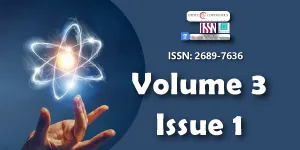An astrobiological theorem
Main Article Content
Abstract
The structure of the human brain reflects multifarious random influences of terrestrial and phylogenetic history, yet the higher mental functions correlated with this unique cerebral neurophysiology are generally assumed to embody universals common to intelligences independent of biological substrate. This assumption is deeply embedded in scientific and popular cultures. However, this idea has not been explicitly investigated. The present study proves that any sufficiently advanced organism of non-zero, finite volume (with boundary) must have a ‘natural’ logic equivalent to Sentential (propositional) Calculus (SC). This commonalty arises from the essential transduction from external to internal milieu that must occur at any organism’s boundary surface. This transduction encodes SC in sensory data and the proof demonstrates that any internal inductive construct—including mathematics and physics—inherits this logical bias. The topological origin of deductive logic not only demonstrates a universal commonality subject to very weak constraints, but also demonstrates a surprising biological origin of foundational principles in mathematics and physics.
Downloads
Article Details
Copyright (c) 2020 Steinberg DA.

This work is licensed under a Creative Commons Attribution 4.0 International License.
Licensing and protecting the author rights is the central aim and core of the publishing business. Peertechz dedicates itself in making it easier for people to share and build upon the work of others while maintaining consistency with the rules of copyright. Peertechz licensing terms are formulated to facilitate reuse of the manuscripts published in journals to take maximum advantage of Open Access publication and for the purpose of disseminating knowledge.
We support 'libre' open access, which defines Open Access in true terms as free of charge online access along with usage rights. The usage rights are granted through the use of specific Creative Commons license.
Peertechz accomplice with- [CC BY 4.0]
Explanation
'CC' stands for Creative Commons license. 'BY' symbolizes that users have provided attribution to the creator that the published manuscripts can be used or shared. This license allows for redistribution, commercial and non-commercial, as long as it is passed along unchanged and in whole, with credit to the author.
Please take in notification that Creative Commons user licenses are non-revocable. We recommend authors to check if their funding body requires a specific license.
With this license, the authors are allowed that after publishing with Peertechz, they can share their research by posting a free draft copy of their article to any repository or website.
'CC BY' license observance:
|
License Name |
Permission to read and download |
Permission to display in a repository |
Permission to translate |
Commercial uses of manuscript |
|
CC BY 4.0 |
Yes |
Yes |
Yes |
Yes |
The authors please note that Creative Commons license is focused on making creative works available for discovery and reuse. Creative Commons licenses provide an alternative to standard copyrights, allowing authors to specify ways that their works can be used without having to grant permission for each individual request. Others who want to reserve all of their rights under copyright law should not use CC licenses.
Shannon CE (1938) A symbolic analysis of relay and switching circuits. Electrical Engineering 57: 713-723. Link: https://bit.ly/2SZXYlu
Steinberg DA (2014) The origin of scientific neurology and its consequences for modern and future neuroscience. Brain 137: 294-300. Link: https://bit.ly/3dvIiji
Steinberg DA (1997) In Brain, mind and physics, edited by P Pylkkanen, P Pylkko and A Hautamaki (IOS Press, Amsterdam, 1997). Link: https://bit.ly/350NbNq
Steinberg DA (1999) A short history of Neurology: The British contribution 1660-1910, edited by F. Clifford Rose (Butterworth-Heinemann, Oxford, 1999). Link: https://bit.ly/3nZNssS
Bell JJ, Slomson AB (1971) Models and Ultraproducts: An Introduction (North Holland Publishing Co., London, 1971) 36-37.
Wigner E (1960) The Unreasonable Effectiveness of Mathematics in the Natural Sciences. Comm. Communications on Pure and Applied Mathematics 13: 1-14. Link: https://bit.ly/3m4p3k7
Dirac PAM (1926) Quantum mechanics and a preliminary investigation of the hydrogen atom. Proceedings of the Royal Society 109A. Link: https://bit.ly/2H2OX8Q
Heisenberg W (1968) Sources of Quantum Mechanics, edited by BL van der Waerden (Dover Publications Inc., New York, 1968).
Schrodinger E (1926) Quantizierung als Eigenwertproblem (Vierte Mitteilung) / Quantization as a Problem of Proper Values. Part IV. Annalen der Physik 81: 109. Link: https://bit.ly/31f471D
Bohr N (1928) The Quantum Postulate and the Recent Development of Atomic Theory1. N Nature 121: 580-590. Link: https://go.nature.com/2T5xD5j
Einstein A (1991) Autobiographical. Notes translated by P.A. Schilpp (Open Court Press, La Salle, Illinois, 1991). Link: https://bit.ly/2SZ8c5A
Einstein A, Podolsky B, Rosen N (1935) Can Quantum-Mechanical Description of Physical Reality Be Considered Complete?. Phy Rev 47. Link: https://bit.ly/2T00tnS
Aspect A, Dalibard J, Roger G (1982) Experimental Test of Bell's Inequalities Using Time-Varying Analyzers. Phys Rev Lett 49. Link: https://bit.ly/3duQcJE

